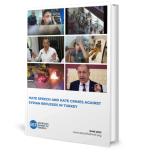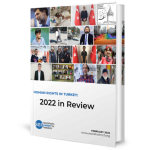
The known number of people affected by disasters has jumped 80-fold since 2015, UN General Assembly President Csaba Kőrösi said during a UN meeting in New York on Thursday.
UN member states met yesterday to review progress on implementing the Sendai Framework for Disaster Risk Reduction — a landmark 2015 agreement to reduce damage, losses and deaths from natural and man-made hazards by the end of the decade.
“Eight years on, we must admit that our progress has not kept pace with the urgency of our days,” Kőrösi said.
Global progress towards disaster risk management has been weak and insufficient and puts at risk the 2030 Sustainable Development Goals (SDGs), UN Deputy Secretary-General Amina Mohammed said at the meeting.
“Our world is at a defining point in history. As we review our journey halfway to 2030, we must acknowledge that progress has been weak and insufficient.”
A 7.8-magnitude earthquake that struck near the Turkish city of Gaziantep – home to around 2 million people and on the border with Syria – as people were sleeping on February 6 was followed by dozens of aftershocks, including a 7.5-magnitude temblor that jolted the region in the middle of search and rescue efforts the same day.
The earthquakes claimed the lives of over 50,000 people across 11 southeastern provinces hardest hit by the disaster, according to the latest official figures.
According to the Turkish Ministry of Environment, Urbanization and Climate, 33,143 buildings were severely damaged by the earthquakes in southeastern Turkey. A total of 6,849 buildings are “moderately damaged,” while around 60,000 are only slightly damaged and 108,840 buildings suffered no damage, the ministry said.













